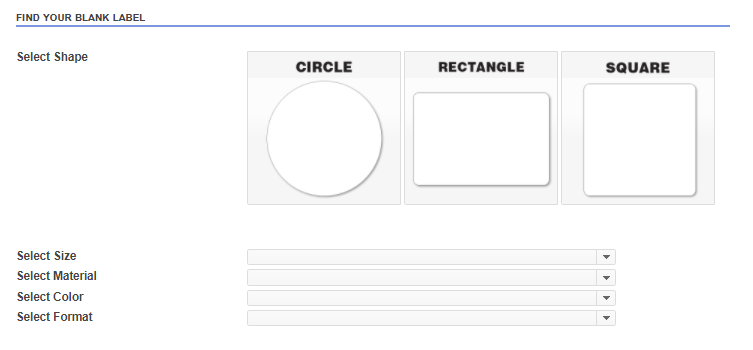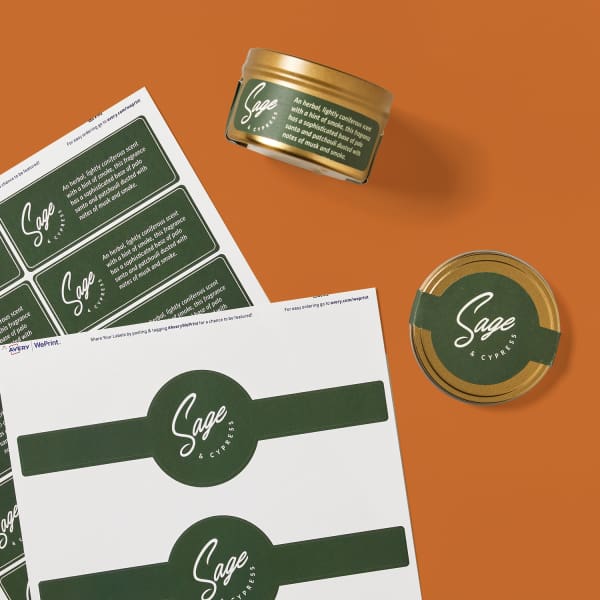Recognizing Exactly How Blank Labels Work to Boost Your Labeling Experience
Recognizing the auto mechanics of blank labels is essential for optimizing your labeling techniques across different contexts. To completely realize how these labels can change your procedures, one have to consider the different kinds readily available and the myriad ways they can be personalized to fit certain demands.

Benefits of Making Use Of Blank Labels
Blank labels use a flexible option for different labeling requirements, making them indispensable in both individual and expert setups. Their versatility allows individuals to create tailored labels tailored to details demands, enhancing organizational performance. Whether used in home workplaces, retail environments, or commercial applications, blank labels facilitate the recognition and classification of products, papers, and personal products.
One considerable advantage of blank labels is their cost-effectiveness. By permitting users to print only the labels they need, waste is lessened, and supply management becomes much more convenient. In addition, blank labels are compatible with various printing methods, including inkjet and laser printers, making them obtainable for various customers.

Moreover, the use of blank labels streamlines the process of upgrading details, as individuals can conveniently print new labels to change outdated ones, making sure that all items and files are properly labeled. Generally, blank labels give a useful and effective labeling solution for diverse applications.
Sorts Of Blank Labels Available
What alternatives are available when it pertains to blank labels? Blank labels come in a variety of kinds, each matched for different applications and preferences. One of the most usual kinds include paper labels, which are flexible and cost-efficient, making them optimal for day-to-day usage. They are available in different coatings, such as matte and glossy, permitting visual flexibility.
Another popular option is synthetic labels, typically made from products like polyester or plastic. These labels are recognized for their durability and resistance to water, chemicals, and tearing, making them suitable for harsh environments. They are typically utilized in industrial settings or for labeling products that may be exposed to moisture.
Additionally, there are thermal transfer labels, which require a printer that uses heat to transfer ink onto the label surface. These labels are preferred for their high-quality print and longevity.
Last but not least, specialized labels accommodate details demands, such as detachable labels for momentary usage or high-temperature labels for extreme conditions. Comprehending these options allows users to select page one of the most ideal blank tag for their special labeling demands.
Personalization Options for Labels
A large array of modification alternatives is available for labels, permitting users to tailor them to certain demands and branding demands. Users can pick from different sizes, forms, and materials to ensure that the labels successfully fit their designated purpose. Usual products consist of paper, polyester, and plastic, each supplying different levels of resilience and aesthetic allure.
Color alternatives play an essential duty in modification, enabling brand names to maintain uniformity with their company identification. Users can pick from a spectrum of colors or also select personalized printing to match certain branding aspects. In addition, labels can be printed with special layouts, logos, and text, improving brand recognition and aesthetic impact.
One more essential aspect is the selection of adhesive. Labels can be developed with irreversible, removable, or repositionable adhesives, relying on the application requirements. This adaptability permits efficient labeling remedies across different settings, from retail to industrial settings.

Tips for Effective Labeling
Effective labeling goes past personalization; it also entails calculated considerations that boost performance and interaction. To accomplish effective labeling, start by clearly specifying the purpose of each tag.
Next, focus on exposure by selecting proper colors and typefaces. High contrast in between text and history enhances readability, while bigger fonts assist in quick recognition. Additionally, make sure that labels are placed in a constant and sensible manner, making it less complicated for users to situate and interpret info.
Consider the toughness of labels as well. Select products suited for the certain setting where the labels will be utilized, whether it be inside or outdoors. Waterproof or tear-resistant choices might be essential depending on the context.
Finally, regularly review and update your labels to show any kind of changes in information or usage. This positive strategy not only maintains clearness yet additionally avoids confusion in time. By complying with these ideas, you can take full advantage of the performance of your labeling initiatives, guaranteeing they offer their designated purpose effectively.
Applications of Blank Labels
Blank labels offer many applications across different markets, making them an important tool for company and interaction. These versatile labels are typically utilized in storage facilities for supply monitoring, allowing services to special info quickly determine and track products. By applying blank labels to storage containers, racks, or pallets, firms can enhance their operations you could try these out and decrease the possibility of errors.
In the healthcare sector, blank labels play a crucial role in classifying drugs and medical supplies, ensuring correct recognition and usage. Customizable labels can consist of crucial info such as dosage, expiry days, and client details, boosting security and compliance.
In retail, blank labels aid in prices products, giving promotions, or labeling rack places, which ultimately improves the customer experience. They enable quick updates to pricing or item information without the demand for pre-printed labels.
Moreover, blank labels are advantageous for individual use, such as arranging office, crafting, or labeling food containers. Their versatility allows people to create customized solutions that satisfy specific demands. In general, the applications of blank labels are considerable, highlighting their relevance in promoting performance and clearness in numerous settings.
Final Thought
In final thought, blank labels offer a versatile and effective remedy for various identifying requirements. Inevitably, the integration of blank labels into operational processes adds to improved efficiency, making them an indispensable source for both individual and expert usage.